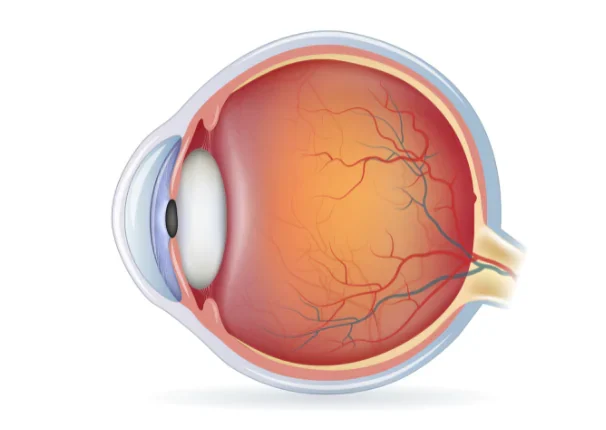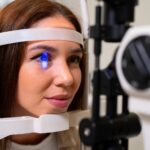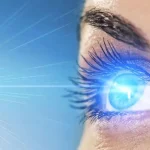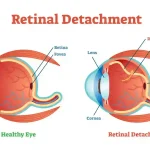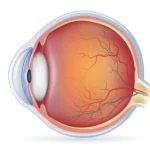Summary: A retinal tear is a serious eye condition that can lead to retinal detachment if untreated. Watch for warning signs like flashes, floaters, or blurred vision. Ageing, eye injuries, and screen exposure increase the risk. Timely treatment with laser or cryotherapy and regular eye check-ups help protect your vision.
We know that the retina is a crucial part that works along with the cornea for clear image formation. The inner thin layer of the eye that consists of nerve fibers and cells responsible for vision is called the retina. The retina is light sensitive and in case of a break or a retinal tear, it may lead to a serious complication called retinal detachment. Only some individuals may face the emergency condition of retinal detachment where the retina detaches from the underlying layers of the eye which nourishes blood supply to the eye. Immediate eye screening is necessary. The more you wait for the treatment, the higher the chances of affected vision.
Thus, reach out to an eye specialist as soon as you notice retinal tear symptoms. Common retinal tear symptoms include:
- Light flashes in one or both eyes, called photopsia.
- Sudden appearance of floaters in vision.
- Blurred or hazy vision.
- Slowly reducing peripheral or side vision.
- Shadowed or dull areas in the field of vision.
The most common question that arises here is how a retinal tear even happens when this is an inner layer in the eye. Let’s get clarity on what causes retinal tears.
Retinal Tear Causes
Our eye contains a jelly-like substance called vitreous gel that supports the eye structure including the retina. With ageing, this gel tends to convert into fluid and gets separated from the retina. Usually, this does not cause any problem, however, if an individual has a sticky vitreous or thin retina, the chances of retinal tears increases.
Other risk factors for retinal tears include:
- Injury or trauma to the eye
- Short-sightedness or myopia.
- Retinal thinning caused by peripheral retinal degeneration.
- As a result of a complicated eye surgery done previously.
If you are identified with any of the risk factors and symptoms, it is highly advised to visit an eye doctor and get proper medical treatment.
What are the Risks and Side Effects of Blue light Exposure?
Blue light from phones, computers, and LED lights is part of everyday life. While normal exposure is safe, prolonged hours in front of screens may lead to eye strain and discomfort. Over time, with prolonged exposure, the retina may experience strain and leading to visual impairment.
Common risks and side effects of blue light exposure include:
- Digital eye strain from prolonged screen time leads to fatigue, dryness, or irritation in the eyes, as well as blurred vision and headaches.
- Disturbance in sleep due to an imbalance in melatonin levels, affecting sleep patterns and circadian rhythm.
- Retinal pressure leading to stress in retinal cells, potentially heightening the risk of age-related macular degeneration as time progresses.
- Decreased contrast sensitivity due to prolonged screen exposure, making it more difficult to concentrate or identify objects in low light.
- Eye fatigue resulting from prolonged exposure to intense, bright blue light.
Basic preventive steps that can lower the risk include:
- Follow the 20-20-20 rule: every 20 minutes, look 20 feet away for 20 seconds
- Use blue light filters or activate night mode on your devices
- Dim the screen brightness before sleeping.
- Limit screen use before going to bed.
- Keep room lighting soft and adjust screen light accordingly
- Have optimal lighting when using digital devices.
How is a Retinal Tear Treated?
Most cases of retinal tears require laser photocoagulation. In photocoagulation, the eye surgeon first instills numbing or anesthetic eye drops, then the doctor focuses the laser on the retinal tear or the minor detachment. The laser fires a high-intensity beam that passes through the eye and burns the detached retina or the torn area to make a scar. The scar tissues formed adhere the detached part to the other tissues. This retinal tear treatment is safe and prevents the condition from advancing further into retinal detachment. It is a relatively painless procedure.
Post procedure the surgeon prescribes a topical steroid to put a stop to inflammation, and the patient is advised to refrain from physically exerting exercises for a few days following the laser therapy. Physical rest along with a few precautionary measures enables the scars to heal completely so that the vision is not affected in the long run.
Another procedure that doctors use to treat retinal tears is cryotherapy also known as cryopexy. This is a freezing technique where anesthetic eye drops are used to numb the eye and then the eye surgeon applies a freezing probe on the outer part of the eye, directed on the tear. Freezing helps in securing the retina in its original place.
Both, photocoagulation and cryotherapy for retinal tears are performed as daycare procedures where the patient can head back home on the same day.
Take Away
Taking good care of your eyes and proactive actions is necessary to maintain healthy vision. Regular eye checkups every six months help in the early detection of many problems. Overlooking vision problems can prove to be highly problematic and may even aggravate conditions like retinal tears. If you have been dealing with retina tear symptoms or want to get a complete eye check-up for you and your family, get in touch with us at Centre For Sight. To schedule your appointment, log on to Centre for Sight.
FAQ’s
What is blue light?
Blue light comes from the sun and digital screens like phones, tablets, and laptops. It can disrupt sleep at night by lowering melatonin levels.
What is blue light, and why is it bad?
Blue light is strong light from the sun and digital devices with screens. Excessive exposure, particularly at night, can lead to interference with sleep, resulting in irregular sleep patterns and a disrupted circadian rhythm.
What does blue light do to your eyes?
Excessive exposure to blue light can cause eye strain and fatigue. In the long run, it may also contribute to serious vision issues.
How does blue light affect sleep?
Blue light can lead to interference with sleep, resulting in irregular sleep patterns and a disrupted circadian rhythm.
What are the blue light consequences?
Excessive blue light exposure can lead to eye strain, headaches, and blurred vision. It can also cause sleep disturbances and disrupt the body’s natural circadian rhythm.
How does blue light damage your eyes?
Blue light can lead to eye strain, pressure, and potential retinal damage over time. Prolonged exposure may also cause serious vision issues.
